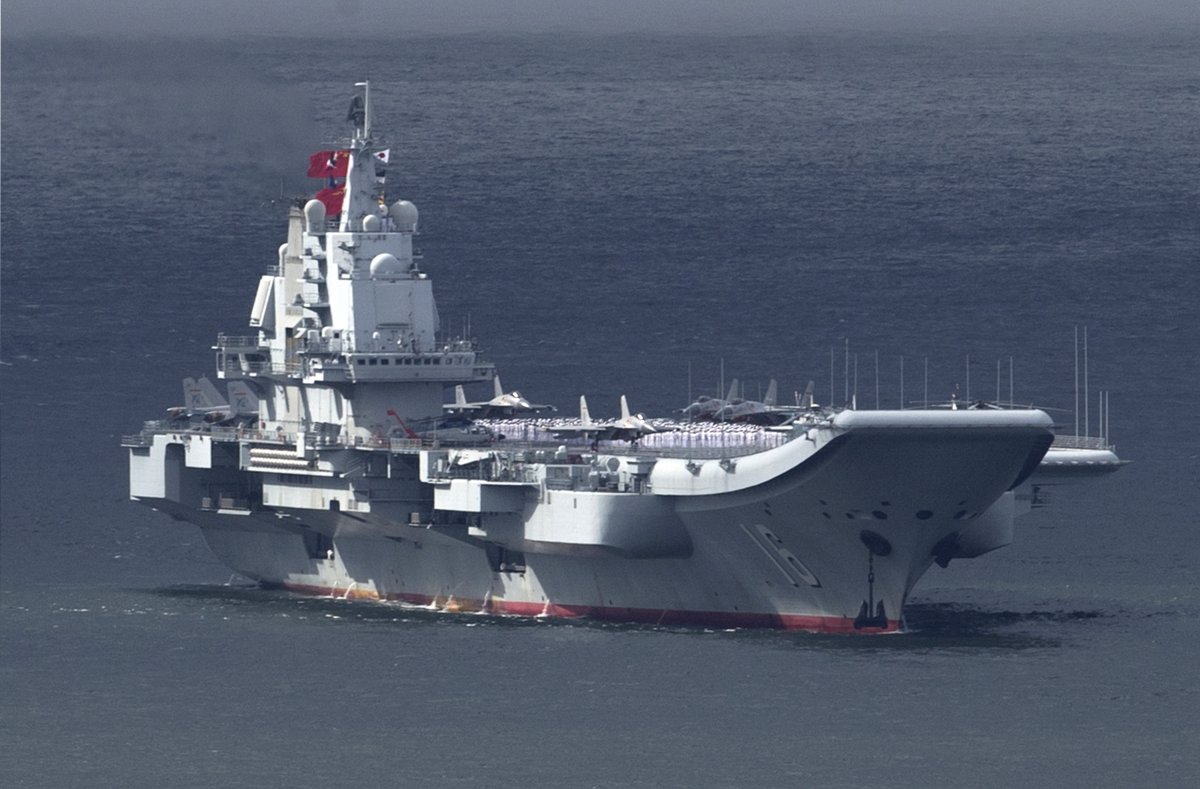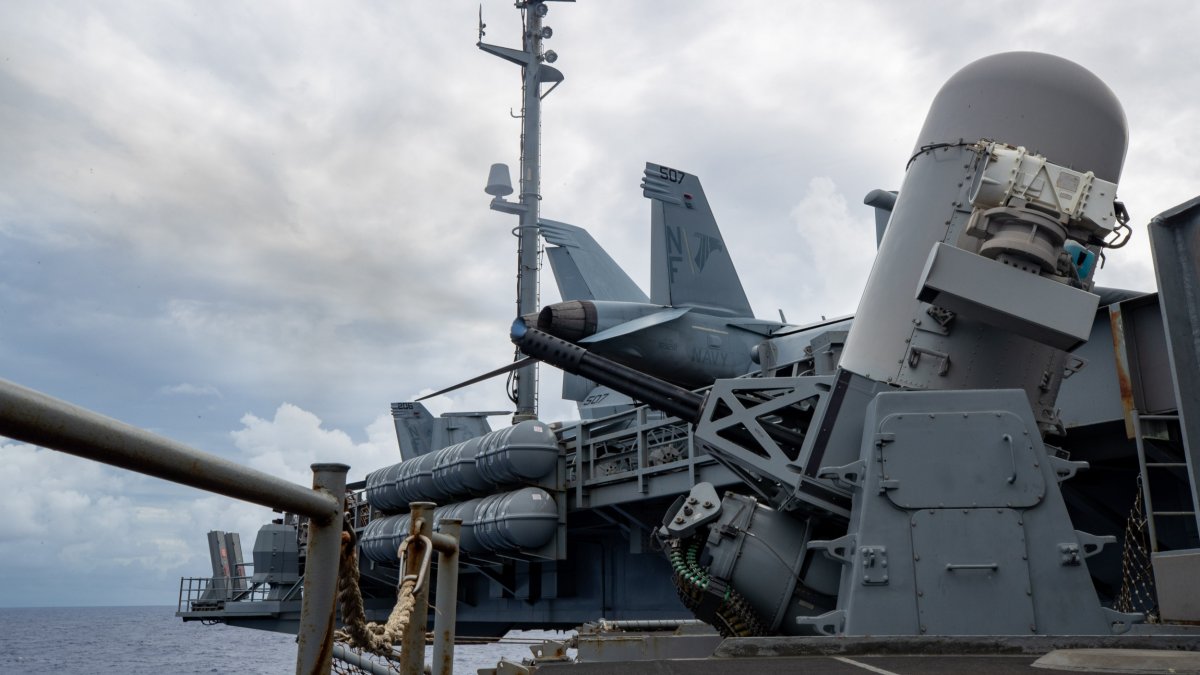A Chinese aircraft carrier transited the contested Taiwan Strait on Tuesday night following a series of operations and exercises in the Western Pacific Ocean since mid-September.
The Defense Ministry of Taiwan reported on Wednesday that a Chinese naval fleet, led by aircraft carrier CNS Liaoning, passed through the 110-mile-wide waterway northward. It said the island's armed forces closely monitored the transit and took appropriate measures.
The waterway separates China to the west and the self-ruled island of Taiwan to the east, while connecting the East China Sea to the north and the South China Sea to the south.
Beijing has long declared China's "sovereignty, sovereign rights and jurisdiction" over the Taiwan Strait, which is not part of the high seas known as international waters. It views Taiwan as part of its territory and has refused to rule out using force to unify the island with the mainland.
The Liaoning, which is the first of three Chinese aircraft carriers, has been deployed since September 17, when it left its home port at Qingdao in the eastern Chinese province of Shandong and reached the Philippine Sea, a marginal sea of the Western Pacific Ocean.

Following a stop on China's Hainan Island in the South China Sea, where the Liaoning was pier-side with the country's second aircraft carrier, CNS Shandong, for the first time, it took part in a large-scale Chinese military exercise held around Taiwan on October 14.
During the drills, which focused on blockades on key ports and areas as well as assaults on sea and land targets, fighter jets launched from the Liaoning were monitored by the Taiwanese combat aircraft, which used a targeting system developed by the United States.
It was not immediately clear whether the aircraft carrier was heading back to its home in Qingdao. Newsweek has contacted the Chinese Defense Ministry for comment by email.
Damien Symon, an open-source intelligence expert, said on Wednesday that as of October 18, the Shandong was underway in the South China Sea, while CNS Fujian, the newest and most advanced Chinese aircraft carrier, remained in Shanghai in eastern China.
The movement of the Liaoning came as the U.S. military faced the so-called "carrier gap" in the Western Pacific Ocean. Official U.S. Navy photos showed USS George Washington was operating as the Seventh Fleet's "premier forward-deployed aircraft carrier" on Wednesday.
The Seventh Fleet, which is part of the U.S. Pacific Fleet, has an operating area that covers the Western Pacific Ocean and the Indian Ocean, stretching from the International Date Line west of the Hawaiian Islands to the border between India and Pakistan in South Asia.
The George Washington was underway in the Eastern Pacific Ocean on Monday, which falls in the Third Fleet's area of operations, official U.S. Navy photos indicated. It left San Diego in California on October 8 and began transit to Yokosuka in Japan as of October 17.

The George Washington replaced sister ship USS Ronald Reagan, which left Japan in May after nine years of deployment in Yokosuka. The former assumed the role of the forward-deployed American aircraft carrier from the latter when they were docked in San Diego.
During the "role swapping" between the George Washington and the Ronald Reagan, USS Theodore Roosevelt and USS Abraham Lincoln, the West Coast-based American aircraft carriers were retasked from deployments in the Western Pacific Ocean to the Middle East.
The rising tensions between Israel and Iran and an increasing American military presence in the Middle East left a "carrier gap" in the Western Pacific Ocean, where the U.S. Navy hopes to counter China's expanding military footprint with the biggest navy in the world.
According to Newsweek's weekly update, the Theodore Roosevelt returned to its base in San Diego on October 15, following a nine-month deployment in the Pacific Ocean and the Middle East. The Abraham Lincoln continued to be on station in the Middle East.




















 English (US) ·
English (US) ·